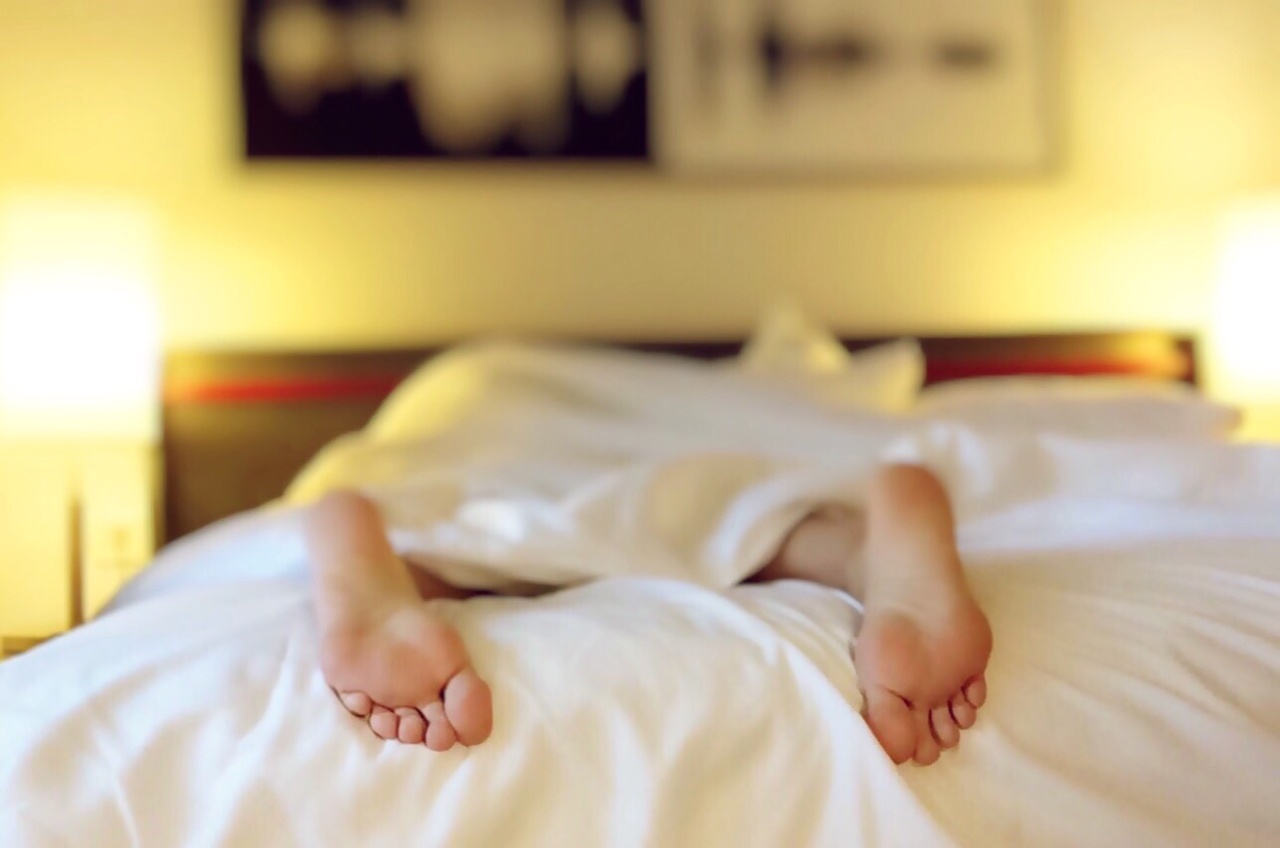Insomnia is a common sleep disorder that affects millions of people worldwide. It can be caused by a variety of factors, such as stress, anxiety, depression, medical conditions, or even certain medications.
Lack of quality sleep can have a profound impact on our overall health and well-being, affecting our mood, cognitive function, and productivity.
If you’re tired of lying awake in bed, desperately trying to fall asleep, this article is for you. We will explore various techniques and strategies that can help you beat insomnia and achieve a restful night’s sleep in just 2 minutes.
1. Progressive Muscle Relaxation (PMR)
Progressive Muscle Relaxation is a relaxation technique that involves tensing and then relaxing each muscle group in your body to achieve a state of deep relaxation. This can help relieve muscle tension and promote better sleep. To practice PMR:.
- Find a comfortable position and close your eyes.
- Start with your toes and tense them for a few seconds, then release.
- Move up your body, tensing and relaxing each muscle group (calves, thighs, abdomen, chest, shoulders, etc.).
- Focus on the sensation of relaxation as you release the tension from each muscle.
By the time you reach your head, you should feel more relaxed and ready for restful sleep.
2. Deep Breathing Exercises
Deep breathing exercises are a simple and effective way to calm your mind and body, preparing you for sleep. Follow these steps:.
- Lie down and place one hand on your chest and the other on your abdomen.
- Inhale deeply through your nose, feeling your abdomen rise as you fill your lungs with air.
- Exhale slowly through your mouth, feeling your abdomen fall.
- Focus on the rhythm and sensation of your breath, allowing it to relax you.
Repeat this deep breathing exercise for a few minutes, and you’ll find yourself drifting off to sleep.
3. Visualization
Visualization involves creating vivid mental images that promote calmness and relaxation. It can distract your mind from racing thoughts or worries, easing you into sleep. Here’s how you can practice visualization:.
- Close your eyes and imagine yourself in a peaceful and serene location.
- Focus on the sensory details of the scene – the colors, sounds, and smells.
- Allow yourself to experience the calmness and tranquility of that place.
- Mentally explore your surroundings, immersing yourself in the moment.
As you engage in this visualization exercise, your mind will gradually relax, making it easier for you to fall asleep.
4. White Noise
White noise refers to a consistent sound that eliminates more disruptive noises and creates a soothing environment. It can help drown out background sounds and promote relaxation.
You can use a white noise machine or try apps that offer various white noise options. Some popular choices include the sound of rain, ocean waves, or gentle static.
Find the white noise sound that works best for you and let it take you into a deep, uninterrupted sleep.
5. The 4-7-8 Technique
The 4-7-8 technique, also known as “relaxing breath,” is a powerful breathing exercise that helps calm the body and mind. Follow these steps:.
- Sit or lie down in a comfortable position.
- Place the tip of your tongue behind your upper front teeth, touching the ridge of tissue there.
- Exhale deeply through your mouth, making a whoosh sound.
- Close your mouth and inhale quietly through your nose to a mental count of 4.
- Hold your breath for a count of 7.
- Exhale completely through your mouth to a count of 8.
- This completes one breath; now inhale again and repeat the cycle three more times for a total of four breaths.
The 4-7-8 technique helps decrease anxiety and promotes relaxation, making it easier to drift off into deep sleep.
6. Limit Electronic Device Usage
Electronic devices emit blue light, which can hinder the production of sleep-inducing hormones and disrupt our circadian rhythm.
It is essential to limit the use of electronic devices, such as smartphones, tablets, and laptops, especially before bedtime.
Try to establish a “digital curfew” by turning off electronic devices at least an hour before you plan to sleep.
Instead, engage in relaxing activities like reading a book, taking a warm bath, or listening to soothing music to prepare your mind and body for sleep.
7. Maintain a Consistent Sleep Schedule
Our bodies thrive on routine, and maintaining a consistent sleep schedule can help regulate our circadian rhythm. Try to go to bed and wake up at the same time every day, even on weekends.
By establishing a regular sleep routine, your body will learn to recognize when it’s time to sleep, making falling asleep easier.
8. Create a Soothing Sleep Environment
A comfortable sleep environment plays a crucial role in achieving a good night’s sleep. Make sure your bedroom is cool, dark, and quiet.
Consider using blackout curtains, earplugs, or a sleep mask to eliminate any potential distractions that may disrupt your sleep.
Invest in a supportive mattress and comfortable pillows to ensure your body is properly aligned and avoid any discomfort. Your sleep environment should be a sanctuary for rest and relaxation, signaling your mind and body that it’s time for sleep.
9. Avoid Stimulants and Heavy Meals Before Bedtime
Stimulants like caffeine and nicotine can interfere with your ability to fall asleep. It’s best to avoid consuming these substances, especially close to bedtime.
Additionally, heavy meals or spicy foods can cause digestive discomfort and make it harder to relax and sleep soundly.
Opt for a light, balanced dinner and avoid consuming food or beverages that may keep you awake, such as coffee, tea, or energy drinks.
10. Establish a Pre-Sleep Routine
A pre-sleep routine helps signal to your body that it’s time to wind down and prepare for sleep. Engage in relaxing activities that promote tranquility and reduce stress. Here are some ideas to incorporate into your pre-sleep routine:.
- Practice gentle stretching or yoga.
- Take a warm bath or shower.
- Sip on a cup of herbal tea, like chamomile or lavender.
- Listen to calming music or a guided meditation.
- Write down any worries or thoughts in a journal to clear your mind.
Find a routine that works for you and follow it consistently to prime your mind and body for a restful night’s sleep.































